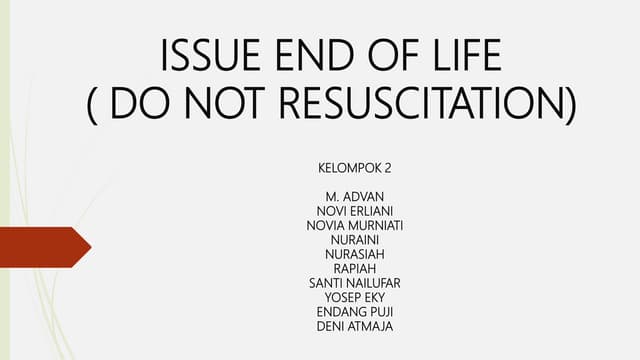There's An Issue On Our End. We're On It.

Imagine settling into your favorite armchair, a steaming mug of tea warming your hands, ready to lose yourself in a brand-new episode of that show everyone's been talking about. The opening credits roll, the music swells, and then… nothing. Just a spinning wheel, a frozen screen, and the dreaded words: "There's an issue on our end." A collective groan echoes across living rooms worldwide.
This seemingly simple phrase, "There's an issue on our end. We're on it.", has become the ubiquitous, albeit often frustrating, mantra of our hyper-connected age. It speaks to the complex dance between technological promise and inevitable glitches, a dance where transparency and responsiveness can make all the difference in maintaining user trust and navigating the choppy waters of digital disruption.
The Rise of the Digital Apology
The digital landscape is built on a foundation of intricate systems, each relying on the others to function seamlessly. From sprawling data centers to the individual devices in our pockets, a single point of failure can cascade into widespread disruption. That means that "There's an issue on our end. We're on it." is not simply a technological blip, but a signal that something, somewhere, has gone awry.
The phrase, or variations of it, represents a shift in how companies address service interruptions. Years ago, many organizations were reluctant to admit any fault, often opting for vague explanations or simply remaining silent. Today, in an era of instant communication and heightened customer expectations, that approach is simply not viable.
Modern consumers expect, even demand, immediate acknowledgement and proactive updates when something goes wrong. Companies that fail to meet these expectations risk losing customers and damaging their reputation.
Transparency: A Double-Edged Sword
The move towards transparency is, on the whole, a positive development. By admitting that "There's an issue on our end. We're on it.", companies acknowledge their responsibility and demonstrate a commitment to resolving the problem. This honesty can foster trust and build goodwill, even in the face of inconvenience.
However, transparency is a double-edged sword. While customers appreciate being informed, they also expect tangible progress. A stream of apologies without corresponding action can quickly erode trust and breed resentment. The key is to balance honesty with demonstrable effort.
According to a 2023 study by the Pew Research Center, 78% of Americans believe that companies should be transparent about data breaches and service disruptions. However, only 34% believe that companies are actually doing a good job of communicating these issues.
Behind the Scenes: What "We're On It" Really Means
The phrase "We're on it." often belies the complex and multifaceted efforts underway to diagnose and resolve the underlying issue. Depending on the nature of the problem, the response can range from a simple server restart to a full-scale emergency involving engineers, cybersecurity experts, and communication specialists.
Many companies now employ sophisticated monitoring systems that can detect anomalies and potential problems before they escalate. These systems can automatically trigger alerts, notifying the appropriate teams and initiating the troubleshooting process. This proactive approach can significantly reduce the impact of disruptions and minimize downtime.
The larger and more complex the organization, the more intricate the process becomes. Coordinating efforts across multiple departments, managing communication with stakeholders, and ensuring that all teams are working towards the same goal requires careful planning and execution.
The Human Element
While technology plays a crucial role in identifying and resolving issues, the human element is equally important. Skilled engineers, dedicated customer support staff, and effective communication teams are essential for navigating these challenges and maintaining customer satisfaction.
Customer support teams are often the first point of contact for users experiencing problems. Their ability to empathize with frustrated customers, provide clear and concise information, and offer helpful solutions can significantly influence the overall experience.
Behind the scenes, engineers work tirelessly to diagnose the root cause of the problem, develop and implement solutions, and ensure that the system is restored to its normal operating state. Their expertise and dedication are critical for minimizing downtime and preventing future occurrences.
Building Resilience: Preventing the "Issue" in the First Place
While responding effectively to service disruptions is essential, preventing them from happening in the first place is even more important. Companies are increasingly investing in resilience strategies designed to minimize the likelihood of disruptions and reduce their impact when they do occur.
These strategies include implementing robust security measures to protect against cyberattacks, building redundant systems to ensure that services remain available even in the event of hardware failures, and conducting regular testing and maintenance to identify and address potential problems before they escalate.
Investing in employee training and development is also crucial. By equipping employees with the skills and knowledge they need to identify and respond to potential problems, companies can significantly improve their overall resilience.
The Cost of Downtime
The cost of downtime can be substantial, both in terms of lost revenue and damaged reputation. According to a 2022 report by Information Technology Intelligence Consulting (ITIC), a single hour of downtime can cost a large enterprise more than $300,000. For smaller businesses, the impact can be equally devastating.
Beyond the financial costs, downtime can also erode customer trust and damage brand reputation. Customers who experience repeated service disruptions may be more likely to switch to a competitor, and negative reviews and social media posts can quickly spread, further impacting the company's bottom line.
Therefore, investing in resilience and proactive problem-solving is not just a matter of good customer service; it's a critical business imperative.
Looking Ahead: The Future of Digital Apologies
As technology continues to evolve, the nature of service disruptions will likely change as well. New challenges, such as those posed by artificial intelligence and the Internet of Things, will require new approaches to problem-solving and communication.
The ability to anticipate potential problems, respond quickly and effectively, and communicate transparently with customers will become even more critical in the years to come. Companies that master these skills will be well-positioned to thrive in the ever-changing digital landscape.
Ultimately, "There's an issue on our end. We're on it." is more than just a statement; it's a promise. A promise to acknowledge responsibility, to work diligently to resolve the problem, and to learn from the experience to prevent future occurrences. It's a promise to value the trust and loyalty of customers, even in the face of adversity.
And as we wait for that spinning wheel to disappear and our favorite show to resume, we can perhaps appreciate the complex and often invisible efforts underway to keep the digital world spinning, one issue, one fix, one apology at a time.

















